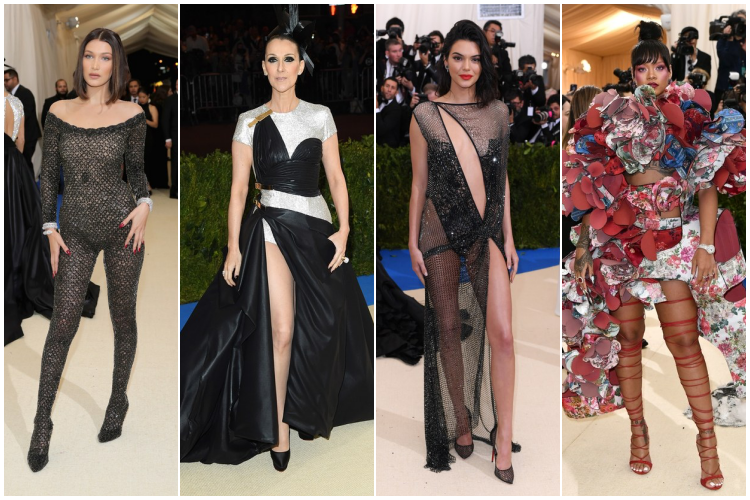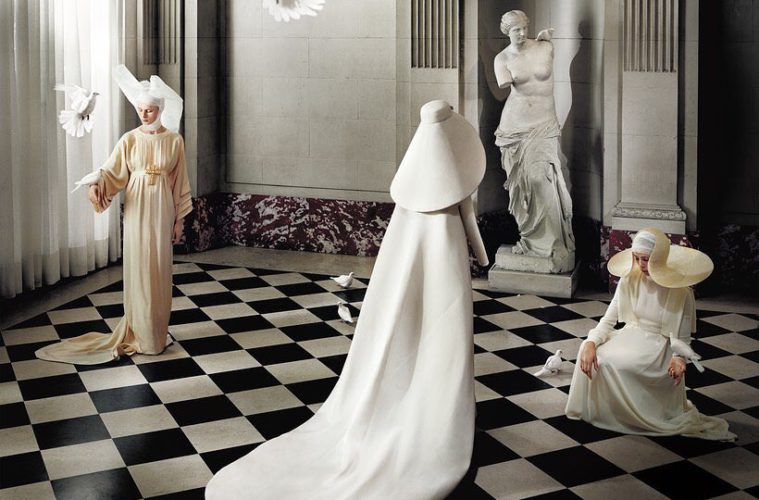Next May 7th the great social event in New York will take place: the MET Gala. The chosen topic for this 2018? Fashion and religion. Specifically, fashion and catholic religion.
The truth is that Catholicism has been a constant inspiration for designers over the years. More or less controversial and more or less evident but, in any case, Met Ball gets inspired by that influence for this year. The exhibition “Celestial bodies: fashion and the Catholic imagination”, which will be open to the public at the Metropolitan Museum of New York from May 10th to October 8th also talks about this topic.

Dress of the Fall-Winter Collection 2000-2001 of Haute Couture. John Galliano for Dior, which will be part of the exhibition of the MET.
A controversial topic?
Although, since Anna Wintour took over in 1995, the Gala became a global phenomenon, this year the expectation is even greater. Why? Because guests have to make a personal interpretation of the chosen theme. The red carpet is the most important focus of the night, all the big firms want to be present to show their designs in the bodies of celebrities. But, in what way will firms and assistants carry out these interpretations in this edition? Will they opt for neutrality or will they look for scandal?
Last year, the event was dedicated to the Japanese designer Reí Kawakubo, the woman behind Comme des Garçons. It was the first time since 1983 that the Fashion Department of the museum chose a live protagonist and the interpretations of the guests, more or less daring, gave us some of the most spectacular looks of the season.

Some of the most famous looks of the MET Gala 2017 were Bella Hadid by Alexander Wang, Celine Dion by Versace, Kendall Jenner by La Perla and Rihanna by Comme des Garçons.
Leaving aside the controversy, it is truly interesting to observe the influence that Catholicism has had on the world of fashion. And, as Andrew Bolton, curator of the Metropolitan Museum of New York, said:
“Fashion and religion have always had a close relationship, inspiring and influencing each other.”
Religion gets on the catwalks
From this we can find an infinity of examples in which designers put Catholicism in the catwalk. Forms, fabrics, colors, symbols, paintings and mosaics. The are endless possibilities.
Spain, one of the countries with the greatest religious tradition, finds in Cristóbal Balenciaga one of the maximum exponents of this influence, especially in forms. Very austere dresses that imitate the outfits of parish priests, friars and nuns and a passion for art that is also reflected in his designs.

Designs of monacal inspiration of Cristóbal Balenciaga. In the center, the work “El Cardenal”, by Ignacio Zuloaga.
A more recent allusion is the one that could be seen in the Spring-Summer Collection of Haute Couture 2007 by Jean Paul Gaultier. Inspired by the iconography that surrounds the Virgin and, specifically, Our Lady of Sorrows, the models wore haloes, mantillas and other details like hearts pierced by swords or tears furrowing their faces.
In 2014, Valentino presented a dress in his Spring Haute Couture Collection that included a scene of Adam and Eve from a painting of Lucas Cranach The Elder. The garment, which will be part of the MET exhibition, is a clear sign that not only is there a strong union between fashion and Christianity but also between fashion and art.
Dolce & Gabbana also have resorted repeatedly to religious iconography in its collections but undoubtedly the most celebrated was the Autumn-Winter 2013 Collection. In an ode to Byzantine art, designers walked the mosaics of the Italian cathedrals of Monreale, La Martorana and Cefalù.
But not only the firms will lend their designs to the exhibition. The Vatican will lend the museum around forty pieces of ecclesiastical art, most of which have never seen the light outside the Holy See.
Fashion is allied with the Holy See in an exhibition that is a journey through history, faith and art.







